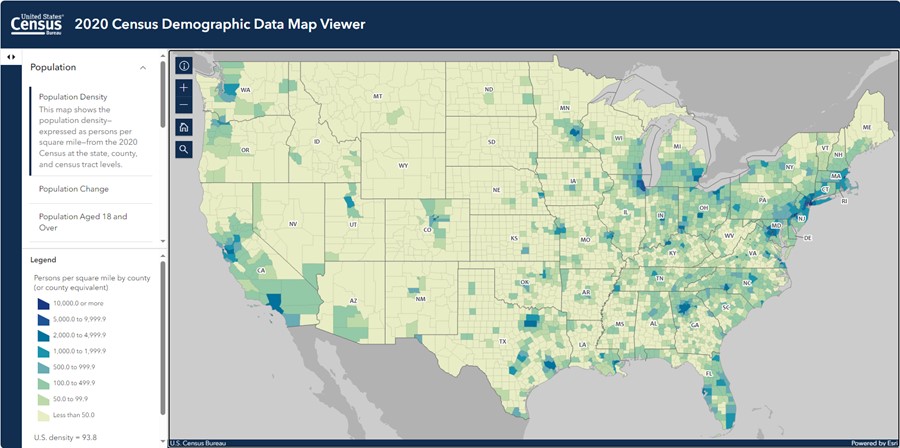Marriage, Divorce, Widowhood Remain Prevalent Among Older Populations
Marriage, divorce and widowhood are all significant events in the lives of anyone who has ever been married but they are especially prevalent among the older population.
Older adults have rich marital histories that reflect both partnership and loss over their lifetime, according to a new U.S. Census Bureau report entitled, “Number, Timing, and Duration of Marriages and Divorces: 2016.”
Since the 1990s, the national trend of divorce among adults 50 years or older has risen, often linked to the marital instability of the aging baby boomer generation.
The report uses estimates from the 2016 1-year American Community Survey (ACS), as well as the 2014 Survey of Income and Program Participation (SIPP) Wave 1 and Social Security Administration Supplement files.
Marriage
At least 9 in 10 adults ages 60 or older have been married. Specifically, 91% of men and 92% of women ages 60 to 69 and 95% of both men and women ages 70 or older have been married.
These estimates are much higher than for all men (63%) and women (69%) ages 15 or older.
Many older adults remained in their marriage for a long period of time. Among adults who married in the 1970s, at least half reached their 25th anniversary.
At least 59% of adults ages 60 or older have been married just once. Among those ages 60 to 69-years, 46% of men and 39% of women are still married to the first and only person they wed.
Divorce
With marriage comes the risk of a marital dissolution via divorce or widowhood, which have both been prevalent among older adults.
While 34% women and 33% of men ages 20 or older who ever married had ever divorced, the percentage of adults 55 to 64 years who ever divorced is much higher: about 43% for both sexes.
Although significantly lower when compared with 55 to 64 year olds, high rates of divorce persist for those 65 to 74 years at 39%, which is still higher than for the general adult population. For adults ages 75 or older, the rate is lower at 24%.
Since the 1990s, the national trend of divorce among adults 50 years or older has risen, often linked to the marital instability of the aging baby boomer generation.
Widowhood
Divorce is not the only marital disruption that older adults face. They also disproportionately represent a large percentage of those who become widows or widowers in a given year.
Among adults 15 or older widowed in the preceding 12 months, 71% of men and 69% of women were 65 or older, even though this age group comprises only 19% of all people ages 15 or older.
Widowhood is particularly common among older women compared to older men due to differences in life expectancies. Women on average live longer than men.
Among those 75 years or older who had ever married, 58% of women and 28% of men had experienced the death of a spouse in their lifetime, making this stage of life particularly difficult for older adults.
The proportion of those who are currently widowed is relatively lower than for those widowed at one point because some respondents who lost a spouse eventually remarried, becoming "currently married" instead of "currently widowed."
Nonetheless, differences between the sexes persist among those 75 years or older: 54% of women and 20% of men were currently widowed at the time of interview.
Remarriage
After divorce and widowhood, many older adults say “I do” again at some point in their life.
Among men and women 60 to 69 years old, 23% had married twice and less than 10% had married three times or more. Among those ages 70 or older, 22% of men and 19% of women had married twice while 8% of men and 6% of women had married three times or more.
In other words, older adults have a rich marital history that reflects the diverse experiences of long commitment, loss via divorce or widowhood and new partnerships as they age.
Benjamin Gurrentz is a survey statistician in the Census Bureau’s Survey Improvement Research Branch.
Yeris Mayol-Garcia is a statistician demographer in the Fertility and Family Statistics Branch.
Redistricting & Voting Rights Data Office (RDO)
Visualizations
2020 Census Demographic Data Map Viewer is a web map application that includes state-, county-, and census tract-level data from the 2020 Census.
Data
Fact Sheets
Blog Posts
Newsroom
Census Academy
View training resources for 2020 Census data.
Videos
Maps
-
2020 Census Demographic Data Map ViewerThe 2020 Census Demographic Data Map Viewer is web map application that includes state, county, and tract-level data from the 2020 Census.
-
2020 Census P.L. 94-171 Redistricting Data Map SuiteHere you will find the 2020 Census P.L. 94-171 Redistricting Data Map Suite
-
TIGER/Line ShapefilesView all the available mapping files from the Geography program.
Story Ideas and Statistics
-
Stats for StoriesOlder Americans Month: May 2023The 2021 American Community Survey estimated there were 55,892,014 people aged 65 and over in the U.S. out of a total population of 331,893,745, or 16.8%.
-
Stats for StoriesNational Spouses Day: January 26, 2024According to the Current Population Survey 2023 ASEC Supplement, there are some 133.1M married adults age 15+ in the U.S., not counting 4.6M who are separated.
-
Stats for StoriesUnmarried and Single Americans Week: September 17-23, 2023In 2022, about 132.3 million or 49.3% of Americans age 15 and over were unmarried, according to the Current Population Survey.
Subscribe
Our email newsletter is sent out on the day we publish a story. Get an alert directly in your inbox to read, share and blog about our newest stories.
Contact our Public Information Office for media inquiries or interviews.
-
America Counts StoryU.S. Marriage and Divorce Rates Declined in Last 10 YearsDecember 07, 2020Interactive data tool allows you to compare marriage and divorce rates across states for 2009 and 2019.
-
America Counts StoryMost Fathers Either Have Been or Are Now MarriedJune 13, 2019More than nine out of 10 fathers either have been, or are currently, married. Only 8.2 percent have never married.
-
America Counts StoryHow State Marriage and Divorce Rates Stack UpFebruary 20, 2020New interactive data visual allows users to compare marriage and divorce rates across states for 2008 and 2018.
-
EmploymentThe Stories Behind Census Numbers in 2025December 22, 2025A year-end review of America Counts stories on everything from families and housing to business and income.
-
Families and Living ArrangementsMore First-Time Moms Live With an Unmarried PartnerDecember 16, 2025About a quarter of all first-time mothers were cohabiting at the time of childbirth in the early 2020s. College-educated moms were more likely to be married.
-
Business and EconomyState Governments Parlay Sports Betting Into Tax WindfallDecember 10, 2025Total state-level sports betting tax revenues has increased 382% since the third quarter of 2021, when data collection began.
-
EmploymentU.S. Workforce is Aging, Especially in Some FirmsDecember 02, 2025Firms in sectors like utilities and manufacturing and states like Maine are more likely to have a high share of workers over age 55.








